
George Glenn Jones was an American country musician, singer, and songwriter. He achieved international fame for a long list of hit records, and is well known for his distinctive voice and phrasing. For the last two decades of his life, Jones was frequently referred to as "the greatest living country singer", "The Rolls-Royce of Country Music", and had more than 160 chart singles to his name from 1955 until his death in 2013.
Arthur Smith was an American musician, composer, and record producer, as well as a radio and TV host. He produced radio and TV shows; The Arthur Smith Show was the first nationally syndicated country music show on television. After moving to Charlotte, North Carolina, Smith developed and ran the first commercial recording studio in the Southeast.
Lonzo and Oscar were an American country music duo founded in 1945 originally consisting of Lloyd "Lonzo" George (1924–1991) and Rollin "Oscar" Sullivan (1919–2012), best known for being the first to perform the 1948 song "I'm My Own Grandpa". George departed in 1950, and Lonzo was later portrayed by Johnny Sullivan (1917–1967) from 1950 to 1967 and by David Hooten from 1967 to 1985, when the band retired. Lonzo and Oscar owned a record label, a recording studio, and a music publishing company. The recording studio and the record label were called "Nugget". The music publishing company was called "Lonzo and Oscar (BMI)". Melba Montgomery's first recordings were released on Nugget Records in the late 1950s through the early 1960s. The songs which Starday Records released by Melba Montgomery in the 1960s came from Nugget Records. Harlan Howard recorded an album with Nugget Records. Danny Harrison, Melba Montgomery, and Darnell Miller wrote for Lonzo and Oscar's publishing company, Lonzo and Oscar (BMI).
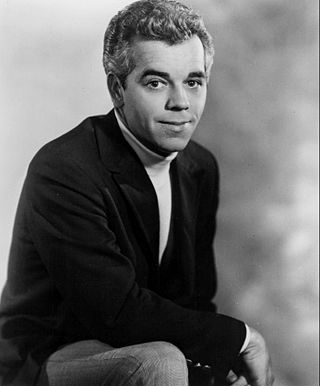
Roy Frank Drusky, Jr. was an American country music singer and songwriter popular from the 1960s through the early 1970s. Known for his baritone voice, he was known for incorporating the Nashville sound and for being one of the first artists to record a song written by Kris Kristofferson. His highest-charting single was the No. 1 "Yes, Mr. Peters", a duet with Priscilla Mitchell.

The Gospel Collection is the 58th studio album by American country music singer George Jones, released on April 4, 2003 on the Bandit Records label, and the first single, "I Know A Man Who Can" was released through Rick Hendrix Company.
Margaret Louise Ebey, known professionally as Margie Singleton, is an American country music singer and songwriter. In the 1960s, she was a popular duet and solo recording artist, working with country stars George Jones and Faron Young. Singleton had her biggest hit with Young called "Keeping Up with the Joneses" in 1964. She managed a successful solo career in the 1960s.
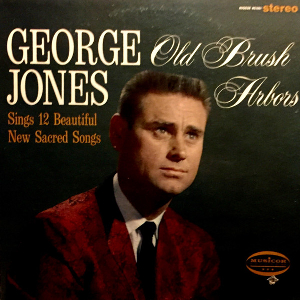
Old Brush Arbors is an album by American country music artist George Jones released in 1965 on the Musicor Records label.
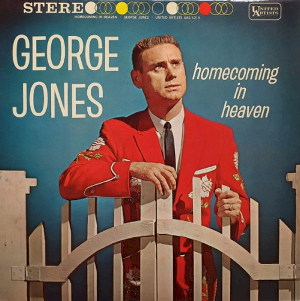
Homecoming in Heaven is an album by American country music artist George Jones. It was released in 1962 on the United Artists record label.

George Jones Salutes Hank Williams is the 1960 country music studio album released in May 1960 by George Jones. The album was the ninth studio LP release, and was recorded in one session. The album has been reissued multiple times since its release, including the tracks being reused on many compilations.
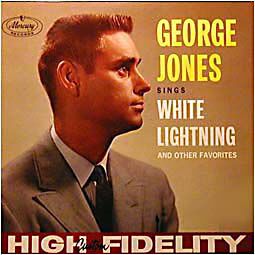
White Lightning and Other Favorites is a studio album released by George Jones on May 26, 1959. Its title track "White Lightning" was a #1 Country hit in 1959.
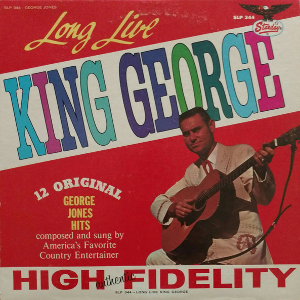
Long Live King George is a 1965 country music album released by George Jones. The album was long thought to be a studio release; however, it is a late Starday Records compilation of Jones recordings throughout the mid- to late 1950s.

Grand Ole Opry's New Star is the debut studio album released by George Jones in November 1956 with Starday Records. Produced by Jones' manager Pappy Daily, the album was recorded during early sessions in 1954, throughout 1955, and other sessions in 1956. It is also the first album to be released on the Starday label, a label only four years old.

The albums discography of American country artist, George Jones contains 80 studio albums, 132 compilation albums, three live albums, ten video albums and seven box sets. Of his studio albums, 69 are solo releases while 11 are collaborative releases. In 1956, Jones's debut studio LP was issued on Starday Records titled, Grand Ole Opry's New Star. The label only issued one studio effort, but would release a series of compilation. On Mercury Records, Jones released six studio LP's including Country Church Time (1959) and George Jones Salutes Hank Williams (1960). He switched to the United Artists label in 1962, where he released 13 studio LP's. Among these was a collaborative LP with Melba Montgomery called What's in Our Hearts (1963), which was his first to chart the Billboard Top Country Albums survey. He moved to Musicor in 1965. Among the label's studio LP's was I'm a People (1966), which reached the top of the Billboard country survey. Musicor also issued his first collaborative studio album with Gene Pitney, which made the Billboard country LP's chart and the Billboard 200.
Harold W. Daily, better known as "Pappy" Daily, was an American country music record producer and entrepreneur who cofounded the Texas-based record label Starday Records. Daily worked with many of the well-known artists in country music during the 1950s and 1960s, especially George Jones, who looked upon him as a father figure and as a business advisor. Other artists with whom Daily worked include Melba Montgomery, J. P. Richardson, and Roger Miller.

"Why Baby Why" is a country music song co-written and originally recorded by George Jones. Released in late 1955 on Starday Records and produced by Starday co-founder and Jones' manager Pappy Daily, it peaked at 4 on the Billboard country charts that year. It was Jones' first chart single, following several unsuccessful singles released during the prior year on Starday.

Blue & Lonesome is a compilation album by American country music artist George Jones released in 1964 on the Mercury Records label.

The singles discography of American country artist, George Jones, contains 182 singles. Of the total, 136 were released with Jones as the solo artist. In addition, 31 were issued with Jones being part of a collaboration. Thirdly, eight singles were issued with Jones being part of a featured act. Fourthly, seven released were promotional singles. Additionally, 14 songs that are not released as singles are included that made any major chart. Finally, 21 music videos which were first issued as singles are also listed. Jones had his first chart success in 1955 with several top ten Billboard Hot Country Songs singles: "Why Baby Why", "What Am I Worth" and "You Gotta Be My Baby". After several more top ten releases, "White Lightning" became his first to top the Billboard country chart. Along with "Who Shot Sam", both singles were also his first to make the Hot 100 charts.
"Seasons of My Heart" is a song written by George Jones and Darrell Edwards. The song was released as the b-side to the #4 hit "Why Baby Why" in 1955. The song was also recorded by Johnny Cash and, released in 1960, it became a #10 hit.
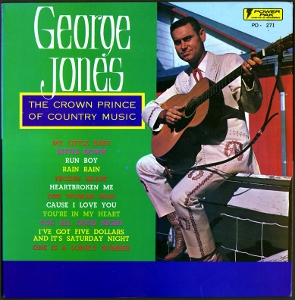
The Crown Prince of Country Music is the 1960 country music compilation album released by Starday Records of previously unissued recordings released in January 1960. The album's original release, like the reissue edition, did not chart.
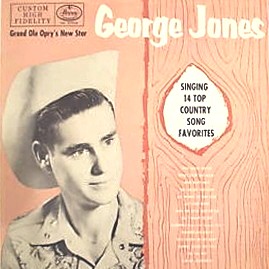
George Jones Sings is a compilation album released by George Jones in May 1957. The album didn't chart well; however, it plays many of his best early recordings.













